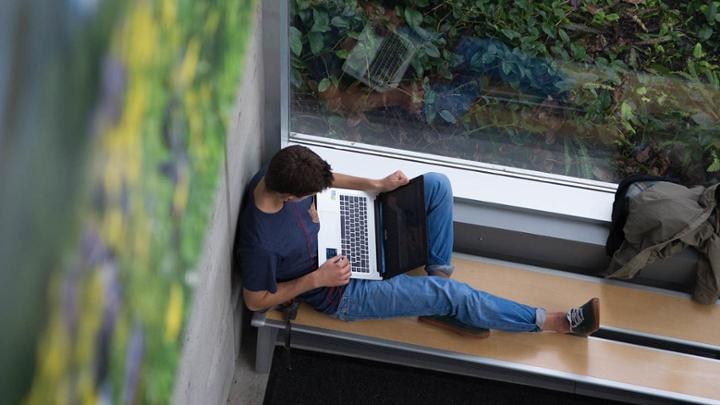Green buildings

As part of UVic's Climate & Sustainability Action Plan (CSAP), we are dedicated to supporting climate adaptation and sustainability practices across our campus operations and planning. This includes how we construct, renovate, maintain and operate campus buildings and infrastructure.
What makes a building "green"?
UVic's Gordon Head campus contains over 240 buildings on 400 acres and is split between Oak Bay and Saanich municipalities.
Since 2006, UVic has been using sustainable development practices that:
- emphasize responsible construction and building practices
- feature recycled materials and renewable resources
- minimize impacts on natural areas
- accommodate more floor space within a smaller building footprint
- utilize systems that emphasize water and energy conservation and efficiency
- enhance indoor environmental air quality
Learn more about UVic's climate goals for campus buildings.
Tour UVic's green buildings
The first of the new student housing and dining buildings, completed in 2022, is called Čeqʷəŋín ʔéʔləŋ (Cheko’nien House), the name given to the territory that is now Oak Bay, and the Peoples who lived there. The second building, Sŋéqə ʔéʔləŋ (Sngequ House) will be completed in September 2023.
Tour the green building features of Čeqʷəŋín ʔéʔləŋ (Cheko’nien House) and Sŋéqə ʔéʔləŋ (Sngequ House).
LEED & Passive House buildings
UVic requires all new buildings and major additions to existing campus buildings to meet LEED V4 Gold or equivalent certification standards (e.g. Passive House, Zero Carbon, etc).
LEED V4 is an internationally recognized, third-party rating system based on energy and environmental principles.
Passive House design principles aim to reduce energy consumption, GHG emissions, maintenance and replacement costs by investing in a higher performing building envelope.
Zero Carbon standards were developed by the Canada Green Building Council. They measure the carbon emissions of a building's materials and operations.
UVic green buildings
UVic currently has nine buildings with LEED Gold certification.
- Sŋéqə ʔéʔləŋ (Sngequ House)
- The second of the new student housing and dining buildings and also targeting LEED Gold and Passive House certification, to be completed in September 2023.
- National Centre for Indigenous Laws and Fraser Building renovation
- Engineering and Computer Science expansion and new High Bay Research Structures Lab
- 2022:
- Čeqʷəŋín ʔéʔləŋ (Cheko’nien House) - the first of the new student housing and dining buildings, completed in 2022 and pending LEED Gold and Passive House certifications.
- District Energy Plant
- 2019: Facilities Management Service Building - approximately 533 m2 in size is located north of Saunders building.
- 2015: Centre for Athletics, Recreation and Special Abilities (CARSA)
- 2011: South Tower Residence
- 2009: First Peoples House
- 2008:
- David Turpin Building (formerly Social Sciences and Math Building)
- Michael Williams Building (formerly Administrative Services Building)
- 2006: Engineering and Computer Science Building
- 2004: Medical Sciences Building
Energy management
UVic manages the energy use and carbon output of our existing buildings through continuous optimization, guided by the Strategic Energy Management Plan (SEMP).
Each year, we evaluate the energy use and consumption of existing buildings and identify cost-effective ways to reduce energy use and emissions. This includes replacing natural gas equipment with low-carbon alternatives like electrical boilers, heat pumps and electrical resistance.